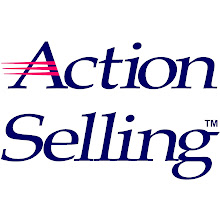Keep Replaying The Sales Call
Sales managers should encourage their salespeople to continually improve. One way to day that is to Replay The Sales Call – Every Time.
Most salespeople continue to make the same mistakes over and over, never recognizing their errors. Therefore, beyond a certain point, they never really get much better at what they do. How can you avoid that trap?
To continually improve your sales productivity and performance, you need two things. First, you need a systematic, step-by-step approach to planning and conducting the sales call that gives you a clear picture of what the whole process looks like when it's done right. Second, you need a strategy for critiquing your own performance regularly in light of that ideal approach.
The nine-act structure of Action Selling provides you with the systematic process. And by mentally reviewing your performance in each act after every sales call you make, successful or not, you ensure that you will never stop improving as a professional sales representative.
Here are some sample questions that top-performing salespeople ask themselves after every sales call:
1. What Commitment Objective did I set for the call? Did I achieve it? If not, what commitment did I gain from the customer and how?
2. Was the person I called upon the ultimate decision maker? If not, did I gain a commitment that will take me closer to that decision maker? Why or why not?
3. What needs did I uncover and agree upon with the customer? Are there needs that will let me differentiate my product?
4. How did I show that my company would be a good match for the customer's company? Could I have done this better? How?
5. Did I tie the needs that I uncovered to the capabilities of my product? Did I describe my product's benefits in terms that address those needs specifically and powerfully? How could I have done better?
Objections are the customer's response to unasked questions. Ask The Best Questions early in the sales call, and customize your presentation so that you'll hear far fewer objections later. If you do hear an objection late in the call, figure out the question you should have asked and ask it now.
In The Field:
After the conclusion of an Action Selling Sales Training Program not long ago, I was approached privately by one of the more mature attendees. "If I had only learned this 30 years ago," he said ruefully, "my life would be much different today."
Naturally, I had to ask: "What would be different?" I will never forget his response. "Everything," he said. "I wouldn't be working at this stage of my life. This workshop has pointed out so many mistakes that I have been making throughout my sales career. Those errors have hurt my income for 30 years."
Those may be the saddest words I've ever heard. If you have a feeling that you may be repeating the same old mistakes in your sales strategy and approach, take charge now.
For more on Sales Manager or Sales Management Training, see our Sales Training site or call 1-800-232-3485.


